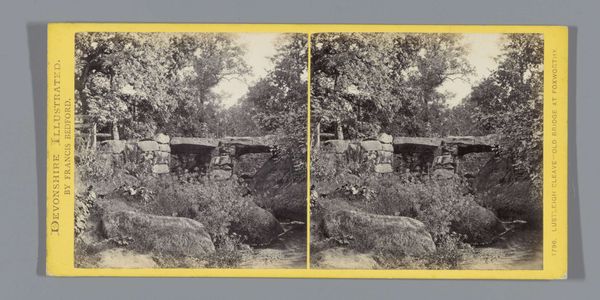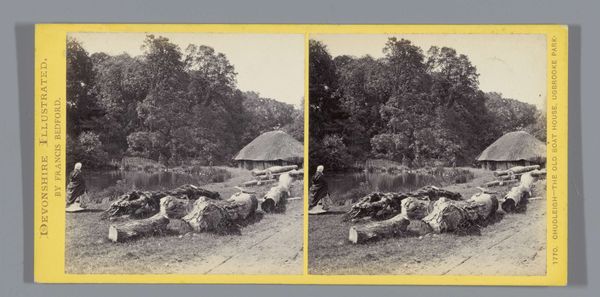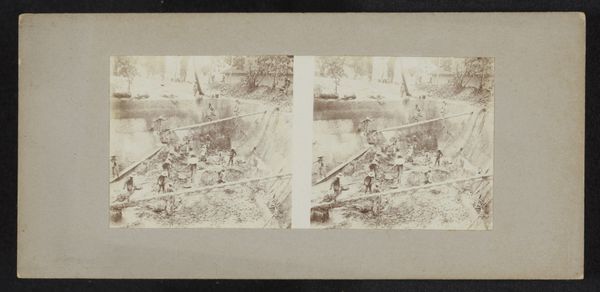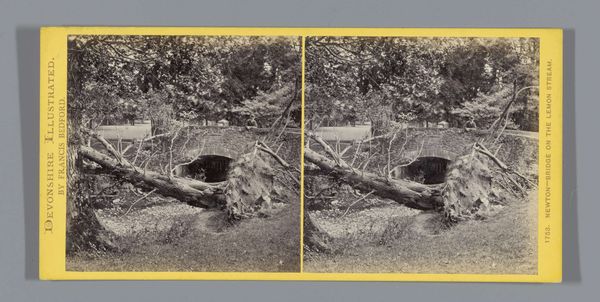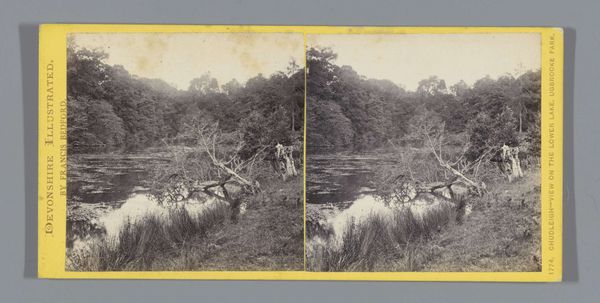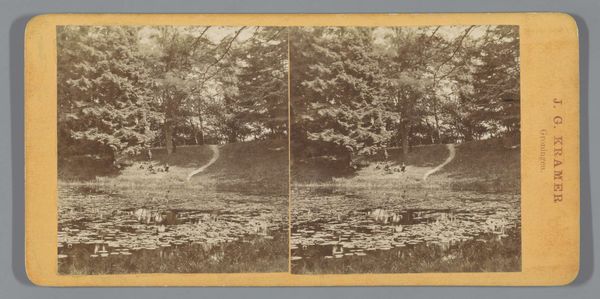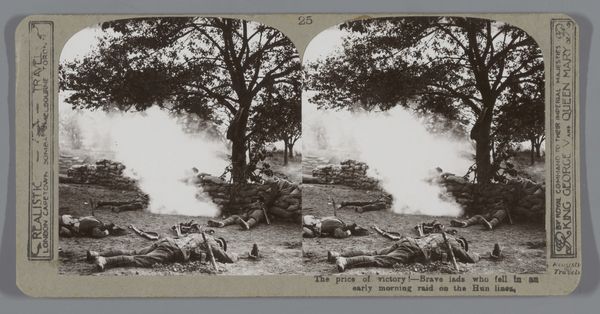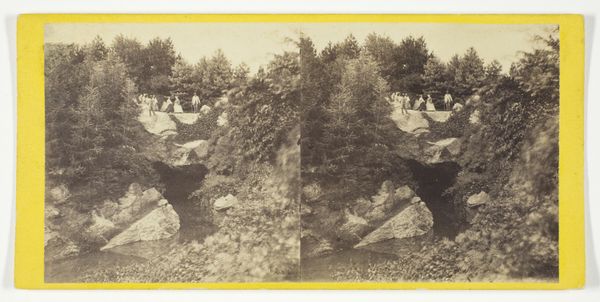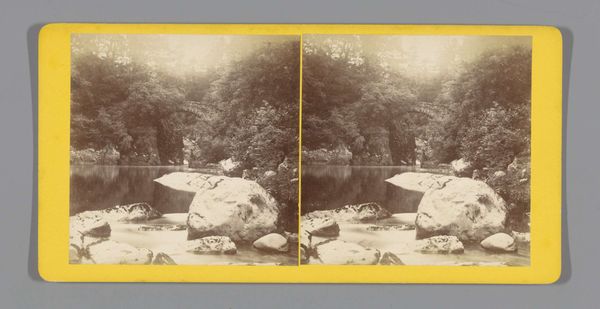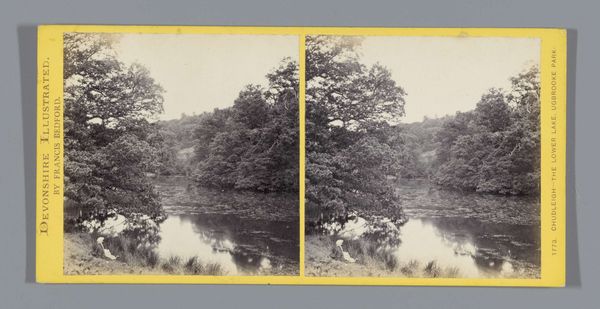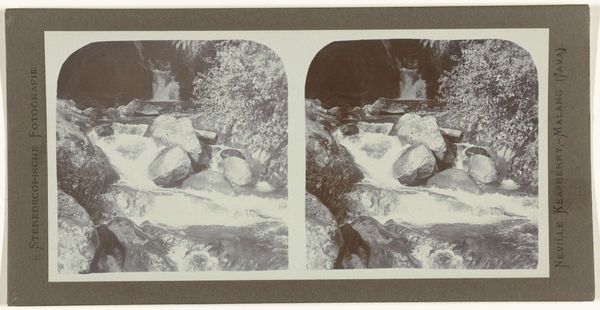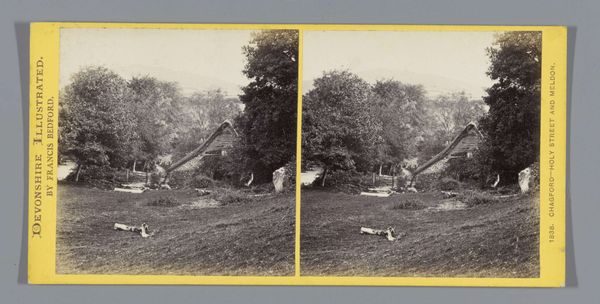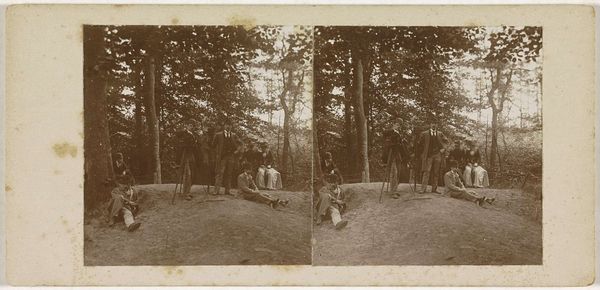
Dimensions: height 85 mm, width 170 mm
Copyright: Rijks Museum: Open Domain
This stereoscopic photograph of Stroomversnellingen in de Weir was created by Francis Bedford in the mid-19th century, using a camera and darkroom techniques that were then at the cutting edge. The process is key to understanding the image. Bedford would have carefully prepared glass plates with light-sensitive chemicals, exposed them briefly in the camera, and then developed them in a portable darkroom. The resulting glass negatives were then used to make prints on paper. Look closely, and you’ll see the way the light plays across the water and the rocks. Photography was celebrated at the time for its apparent objectivity. But in reality, it was a deeply material process, dependent on skilled labor and chemical reactions, each of which left its mark on the final image. Bedford's art lies in his mastery of this process, and his ability to capture a fleeting moment in time. It invites us to consider the labor and skill involved in early photography. This challenges the idea of photography as purely mechanical and objective, highlighting the artistry and craftsmanship involved.
Comments
No comments
Be the first to comment and join the conversation on the ultimate creative platform.
